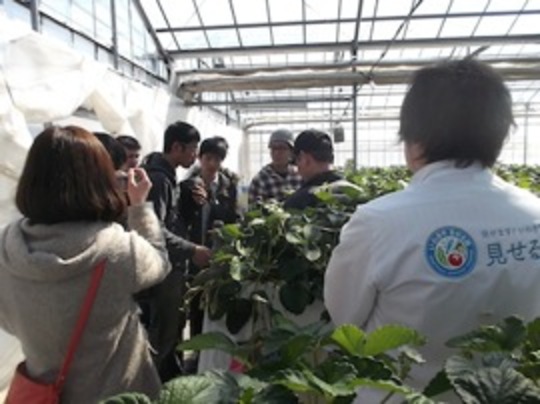
Report: The Fieldtrip to Iwaki City, Fukushima Yuichiro Watanabe
- Dates
- Monday, March 3-Tuesday, March 4, 2014
- Venue
- Iwaki City, Fukushima Prefecture
- Organized by
- The Educational Project 3 "Science, Technology, and Inclusive Society," Integrated Human Sciences Program for Cultural Diversity, The University of Tokyo
Three years have passed since the accident of Fukushima Daiichi nuclear power plant. Although Iwaki city is in Fukushima prefecture, the level of fallout of radioactive substances in the region was relatively low. The present radiation level in the region is almost the same as that in the Kanto area. Nevertheless, pre-shipment monitoring of the radiation level of agricultural and fishery products from the region is still mandatory. The aim of the fieldtrip was to learn how this situation is handled and how people are feeling about the difficulties. The mobile dosimeter I carried with me showed that the radiation level of Iwaki city was 0.08 uSv/hr while that of Tokyo was 0.04. The radiation level of Iwaki city was at the same level as inside of stone buildings. Akie Okada, Project Associate Professor at the Junior Scholars Collaboration Initiative of Komaba Organization for Educational Excellence, and five undergraduate students joined the trip.
[March 3 (Monday)]
13:30 We met Kei Niizuma, the chief of the agricultural and fishery products planning division ("We Will Show! The Information Transparency Office") of Iwaki city at the city hall. Mr. Niizuma gave us a lecture on the general initiatives on production and distribution of agricultural and fishery products in Iwaki city. Also, he introduced the field which we later visited. We then learned about the contents of their initiatives and its background. One of their key focuses is on how to show their transparency, according to Mr. Niizuma.
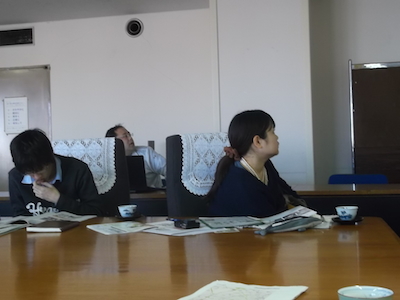
15:30 We were at the agricultural inspection room of the first agricultural center of the JA Iwaki city.
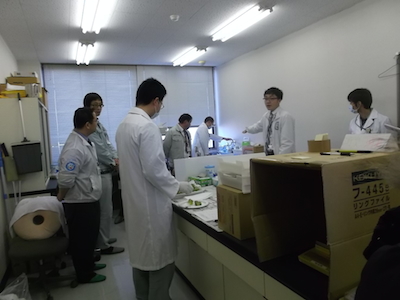
We visited the monitoring room for the agricultural products made in Iwaki city. Mr. Ryuichi Yokota, the manager of the information transparency office of the Iwaki city, guided us. (Above photo: The product to be monitored is sliced into small pieces on the disposable paper dish.) We learned the monitoring protocol, using the monitoring device. It was an interesting experience especially for the five students. The same monitoring protocol can be tried out in the classes of the IHS program. We will be able to discuss the optimal timeframe for the preparation and measurement, and the statistical interpretation of the result, based on this experience.
[March 4 (Tuesday)]
9:20 We visited the country elevator of the JA Iwaki city at Nagatomo of Shikura-machi in Iwaki city.
Every package of rice made in Fukushima prefecture is the target of inspection. The same kind of facilities were built in all areas in the prefecture. As it was not the harvest season of rice, we were shown the demonstration of the inspection process using a package of rice for farm animals. Mr. Yokota guided us. The visit made it clear that the understanding of the timeframe for the measurement, the measurement deviation, and the statistical interpretation of the results are crucial factors for inspection. The balance between the measurement timeframe and the amount of products to be monitored was raised as a practical issue.
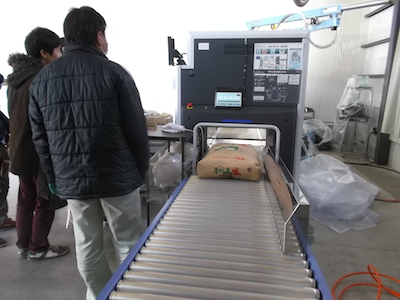
10:00 Mr. Masayuki Oowada of the Juridical Agricultural Union, Oono Hydroponic Growers Association guided us to a large greenhouse, which grows tomatoes and strawberries. Their harvesting is partly open to tourists. We learned about the present condition of the greenhouse and how it was before and after the power plant accident. Although the products grow inside the greenhouse, naturally protected from the radioactive substances, presently, they are also the targets of inspections. This situation is giving people an affliction. Mr. Yokota added that tourists are coming back and their visits are now becoming an opportunity to show the situation around Iwaki city.
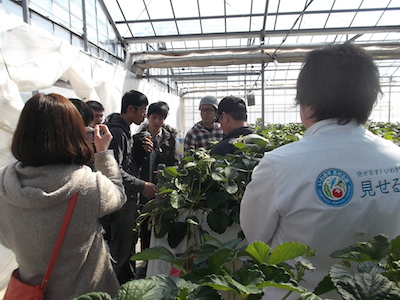
11:00-11:40 We visited the ocean side of the city and saw the present condition of the damaged areas from inside the car. Mr. Yokota guided us. Rubbles were removed and the leveling of the land was in process. It reminded us of the damage they withstood.
12:50-14:00 We visited the Onahama fishing harbor and lectured about the initiatives of the troll fishing association of Onahama (Mr. Nakamura and Mr. Ishizaki) . We were shown the radiation monitoring system that uses a sample made for each fish according to its weight. The issue is how to design a monitoring program capable of confirming the safety of a product, without harming its freshness.
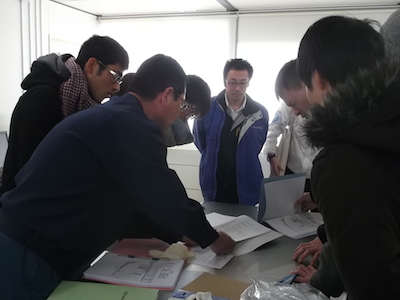
We then went back to Tokyo.
